Stopping superiority: did rim or disc brakes dominate the 2020 Tour de France
Grabbing a handful of the debate on brakes
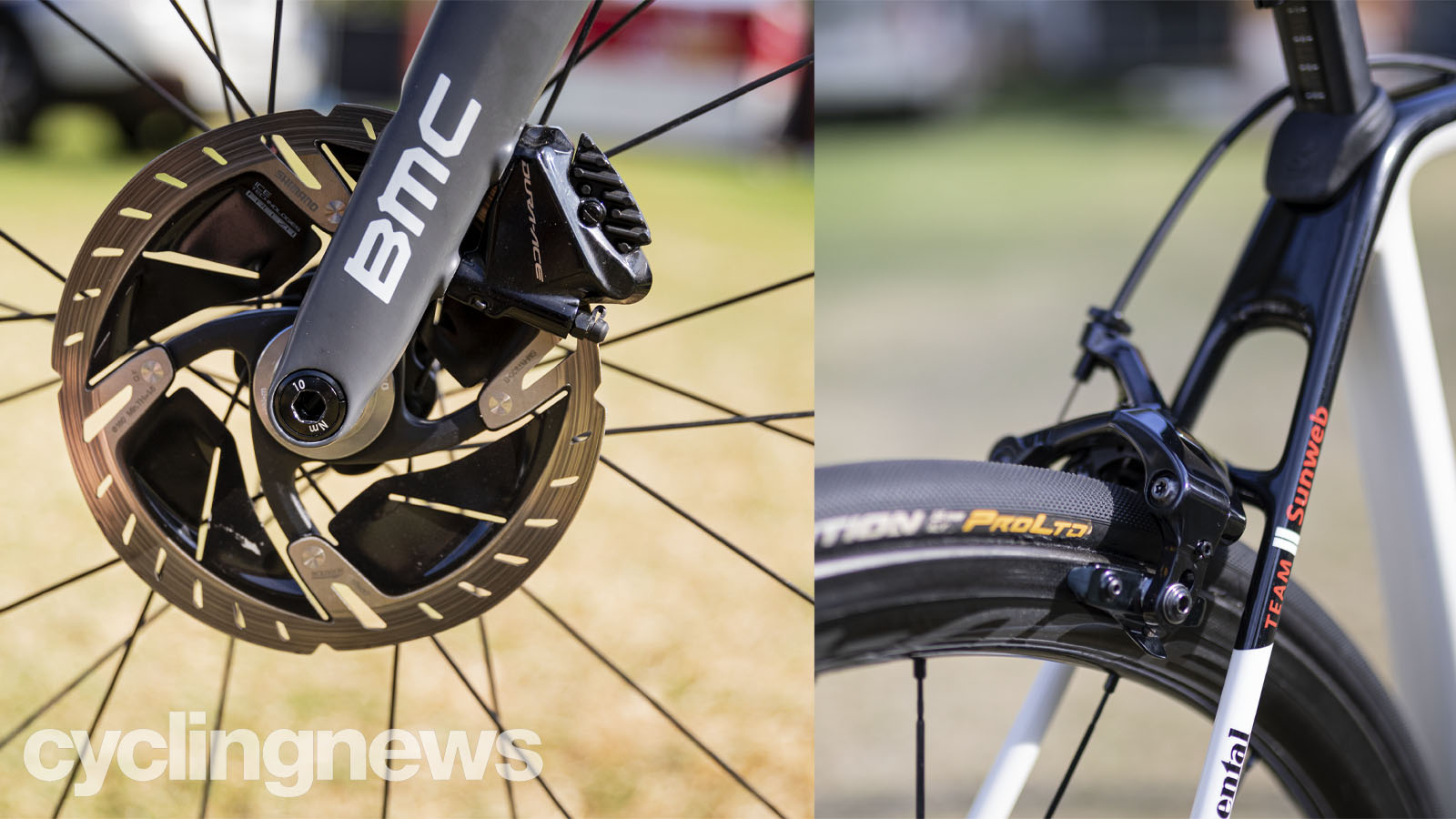
Ever since the first road bike with disc brakes was launched, the debate has raged in comment sections, forum posts, YouTube videos, and editorials on both sides of the aisle, and this year's Tour de France is no different.
We can wax lyrical here about the advantages in stopping power and modulation offered by discs or the weight saving, simplicity, and on-the-fly adjustability of rim stoppers. Still, neither side will be overly happy with the arguments of the other about stopping superiority.
So, given that the biggest race of the season has just rolled down the Champs-Élysées, why not look back and see whether it was the spinning-knives-of-death or we-won’t-slow-you-down-in-the-rain style of brakes which claimed more wins.
Most of the brands that sponsor WorldTour teams are in the process of, or have phased out their rim brake road bikes; however, there are a few notable hangers-on still riding rim-brake frames — some are even using a rim brake frame that is no longer available to the public. The results speak for themselves, and we’ve tabulated which system claimed the most stages, and which stopped short.
- Road bike groupsets: A comprehensive guide
- Road bike disc brakes: a guide to choosing the best disc brakes for your road bike
Sprint stages
Four pure sprinters took stage wins; Alexander Kristoff, Caleb Ewan, Sam Bennett, and Wout Van Aert. The first three were stopping with disc brakes, while Van Aert was conspicuously on the team’s Celeste Bianchi Oltre XR4’s with rim brakes — not the lighter weight black/paint free frames used by his GC contenders. Back at the Tour Down Under, when we weighed Antwan Tolhoek’s Oltre XR4 race bike with rim brakes, it tipped the scales at 7.31kg. While they are very different body types, Tolkhoek and Van Aert are almost the same height, and an educated guess would say are probably riding the same size frame; meaning the Belgian's race bike should be a similar weight.
Ewan’s Ridley Noah Fast and Kristoff’s Colnago V3Rs both come in rim and disc versions, with both sprinters riding the latter. It’s pretty well established that thru-axles are considerably stiffer than their quick-release counterparts and firm up the wheel to frame interface. As a general rule, this makes the bikes stiffer laterally end-to-end against twisting.
When we last weighed Caleb Ewan’s Ridley Noah Fast disc ahead of the People's Choice Criterium at the Tour Down Under, it tipped the scales a 7.6kg, making it 300g heavier than what we ballpark Van Aert's bike at.
Get The Leadout Newsletter
The latest race content, interviews, features, reviews and expert buying guides, direct to your inbox!
- A closer look at Tadej Pogacar's Colnago V3RS
- Why are teams using mountain bike disc rotors at the Tour de France?
- Jumbo-Visma and Ineos have ditched Shimano wheels at the Tour de France but who has the lighter bike?
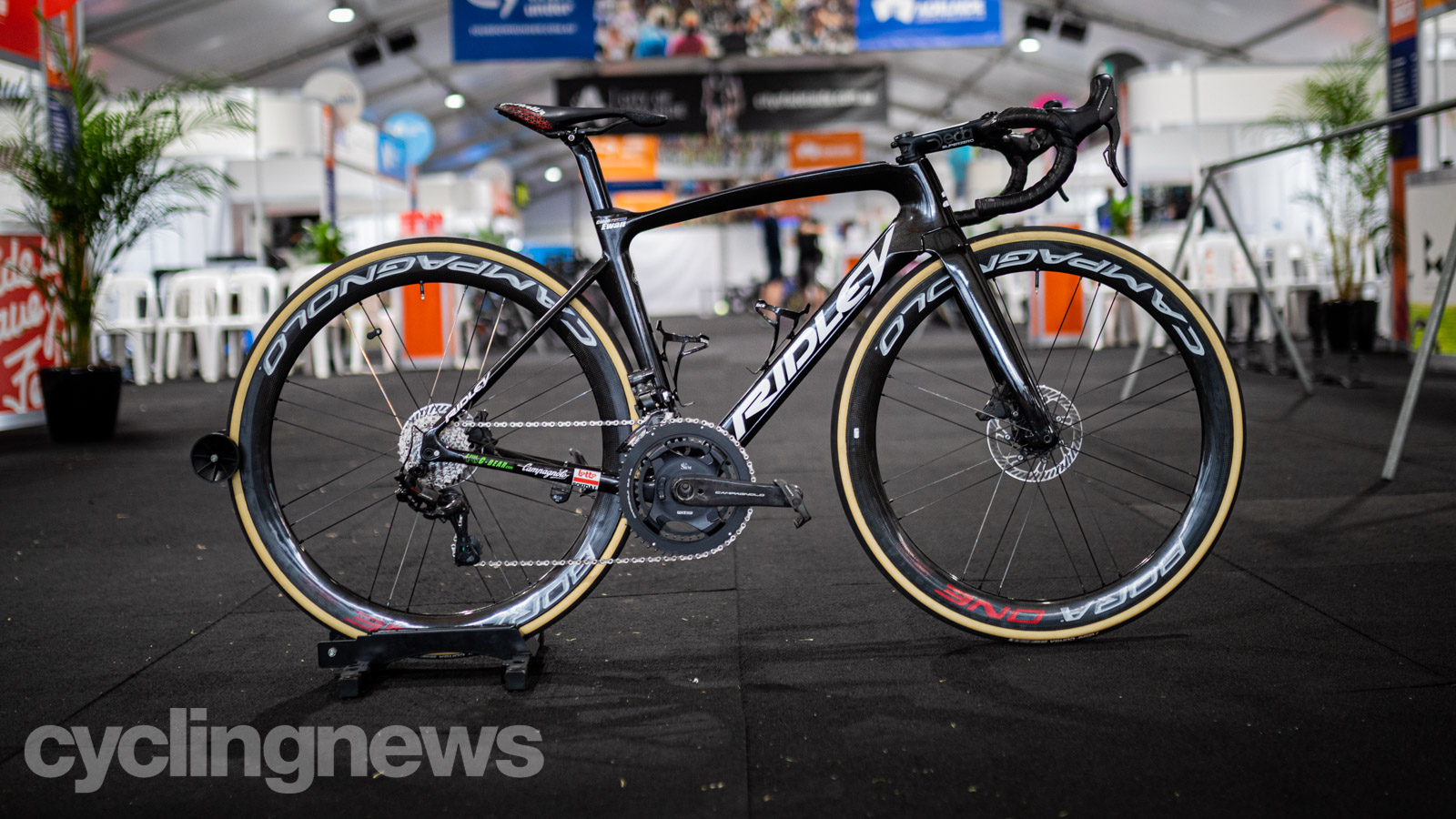
Purely speculating, in the same way that Jumbo-Visma is searching to save a few grams, for a pure sprinter, a stiffer bike that doesn't bend and flex under huge wattages in the final meters of a bunch sprint should be advantageous. While Van Aert is not a pure sprinter, his bike is also lighter than Ewan's.
However, one could argue the torrential downpour on the first stage may have also influenced Kristoff’s decision — again speculation.
As for Bennett, Specialized only offers the Tarmac SL7 with disc brakes, so the bike sponsor made the decision for him, but it seems to have paid off given his green outfit in Paris.
Mountain stages
By my count, when it comes to climbing stages, disc brakes again gain the edge by a margin of six to five stage wins. For the discs, we have Julian Alaphilippe and Lennard Kämna on a Tarmac SL7, Alexey Lutsenko and Miguel Ángel López aboard the Wilier Zero SLR, Marc Hirschi on a Cervelo S5, and Daniel Martínez on a Cannondale SuperSix Evo. Of these rotor draggers, Marc Hirschi is the only rider who had the option of rim brakes, and with the way he animated the race, it's hard to argue with his decision.
For team #savetherimbrake in the mountains, there is a bit more to talk about. Of course, the star of the show is Tadej Pogačar, who earned three stage wins and won the General Classifications while using rim brakes, but he did opt for disc brakes on the flat stage 10.
Earlier I mentioned that Jumbo-Visma confirmed using the Oltre XR4 with rim brakes to shave some weight off the already hefty aero bikes their sponsor provides. But, the plot thickens; according to the UCI approved frame list, as of September 6, 2020 (Stage 8 in the Tour), there is a new Specialissima CV Disc which has appeared at the bottom Bianchi’s extensive table of approved bikes.
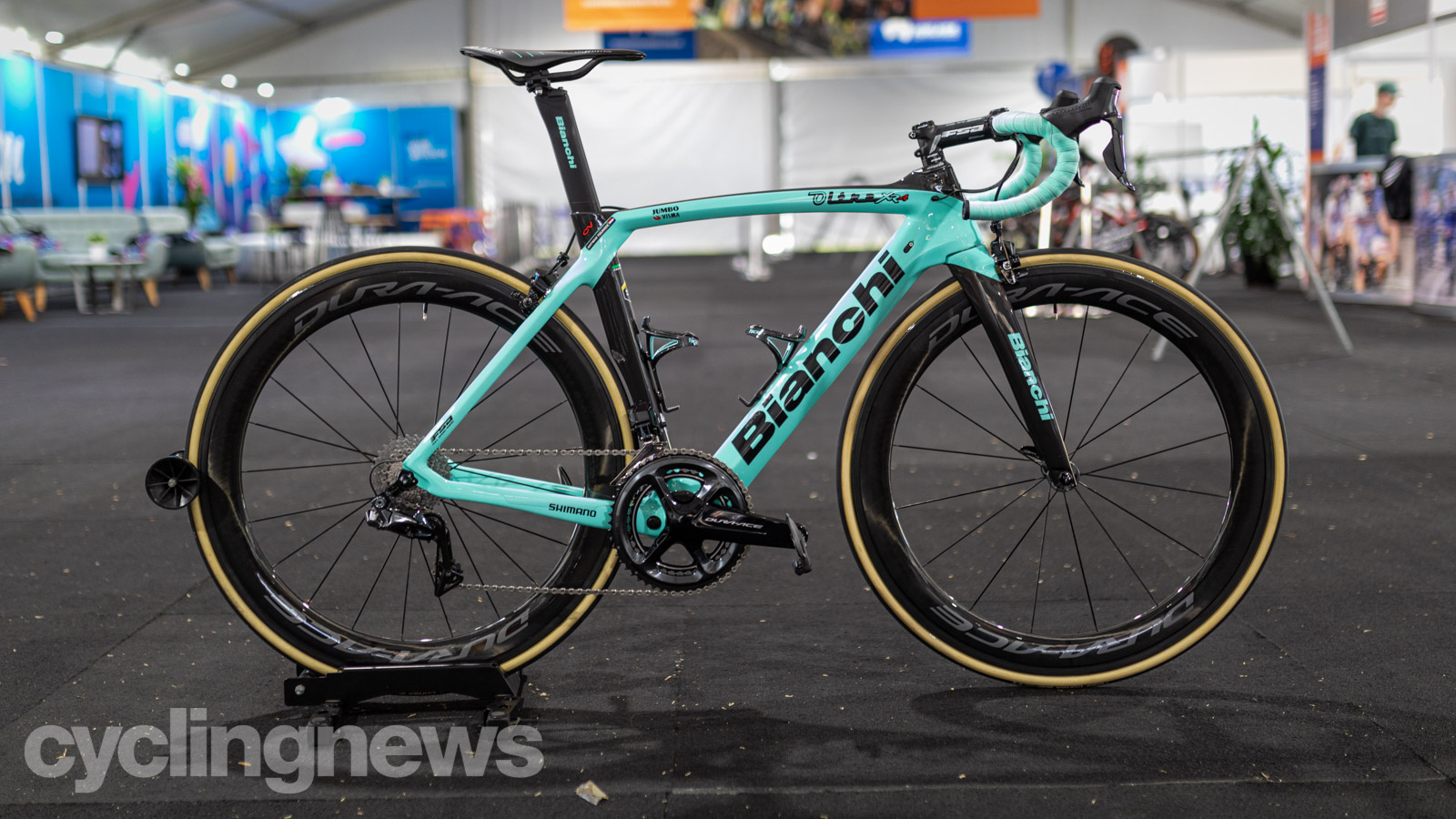
While mid-tour releases are not uncommon, the timing of this addition is odd. Brands usually tee these launches up so that gear can be showcased on the world’s biggest stage (see Met's launch of the Rivale helmet as a prime example), not after the big show has packed up and left — maybe that was the initial plan, but COVID-19 associated backlogs caused delays in the manufacturing or the approval process? We’ve reached out to Bianchi and are awaiting a reply.
Bianchi claims the rim-braked Specialissima frame, which was released in 2015, weighs 780g, a full 200g lighter than the Oltre XR4. Given the weight difference between the Oltre XR4 rim and disc is under 100g, we would assume the Specialissima rim and disc would be separated at a similar interval. While Bianchi has the current Specialissima at its disposal, it's not listed as one of the three race bikes offered to the team, which consists of the Oltre XR4 aero bike, the Aquila time trial bike, and the Infinito CV endurance bike. Besides time trials, it’s been some time since they have raced on anything but the Oltre XR4, and the team’s 2020 hype video doesn’t even acknowledge the existence of the Specialissima.
Riders win races, not bikes, but the equipment does play a role, and the armchair quarterback in me wonders if Roglic had been lugging a lighter bike up and over French summits if he would have been able to hold Pogacar at bay. At the same time, thanks to outfits like SwissSide, we also know that aerodynamics trump weight from speeds about 25km/h and up, and gradients of about eight per cent for pro riders, so who knows.
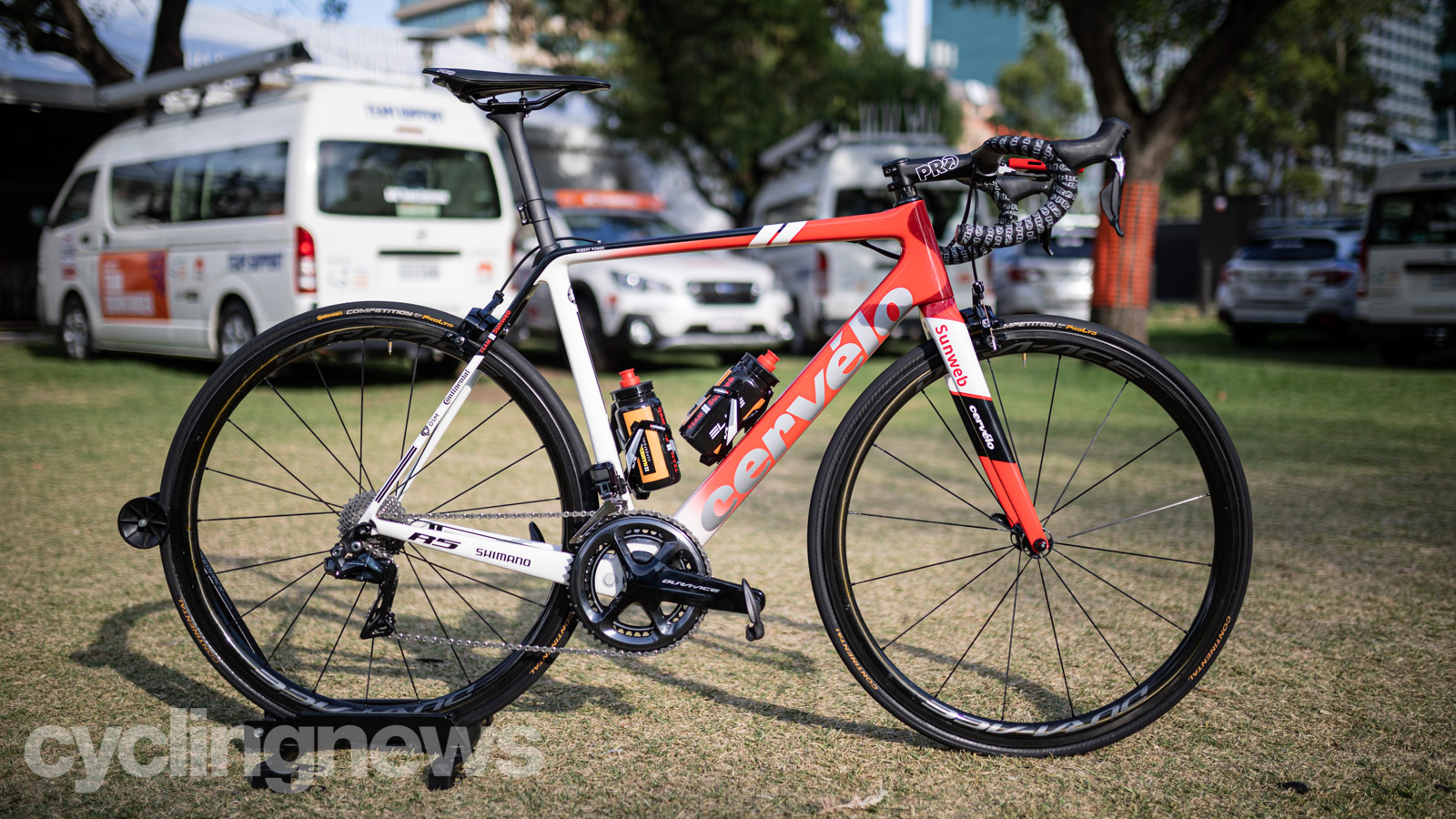
The other somewhat controversial member of team rim brake is Søren Kragh Andersen, who won two stages aboard a Cervelo R5 with rim brakes, which according to the Cervelo website, is no longer available for 2020/2021. In January, we took a look at Robert Power's rim brake R5, which tipped the scales at 7.17kg — the height difference between these riders is 2cm, so we would assume they are riding the same size frame.
The rest of the uphill wins in the rim brake column came from AG2R La Mondiale’s Nans Peters aboard a Merckx Stockeu69, Michał Kwiatkowski on a Pinarello Dogma F12 X-Light. AG2R has been clear from the beginning of this year that it would only be using the 525 Disc for flat stages and the Stockeu69 for mountain stages.
While Pinarello has disc brake versions of the Dogma at its disposal, I can’t remember ever seeing a Pinarello with disc brakes line up at the start of a WorldTour Race — and until this year, it’s hard to argue with the team's record.
TT
The one and only time trial of this year's Tour saw quite a few riders opt for bike changes with about 6km to go. But it was again Pogačar who took the win aboard his Colnago K-One and V3Rs, which both use rim brakes.
Overall and points competitions
In the overall jersey competitions, Pogačar took home three, technically carrying the Yellow, White, and KOM jersey to Paris, the Slovenian used rim brakes for the entire race bar Stage 10 where he opted for discs.
With Sam Bennett taking the green jersey on his Tarmac SL7, Marc Hirschi being awarded the most combative aboard his S5 disc, and Movistar winning the Team competition with a mixture of Canyon Ultimate CF SLX, Aeroad CF SLX (and Valverde seemingly on the new Aeroad CFR throughout), all featuring disc brakes; we're in a dead heat in the points classifications by the numbers — although winning the GC definitely carries a bit of extra weight.
The final tally
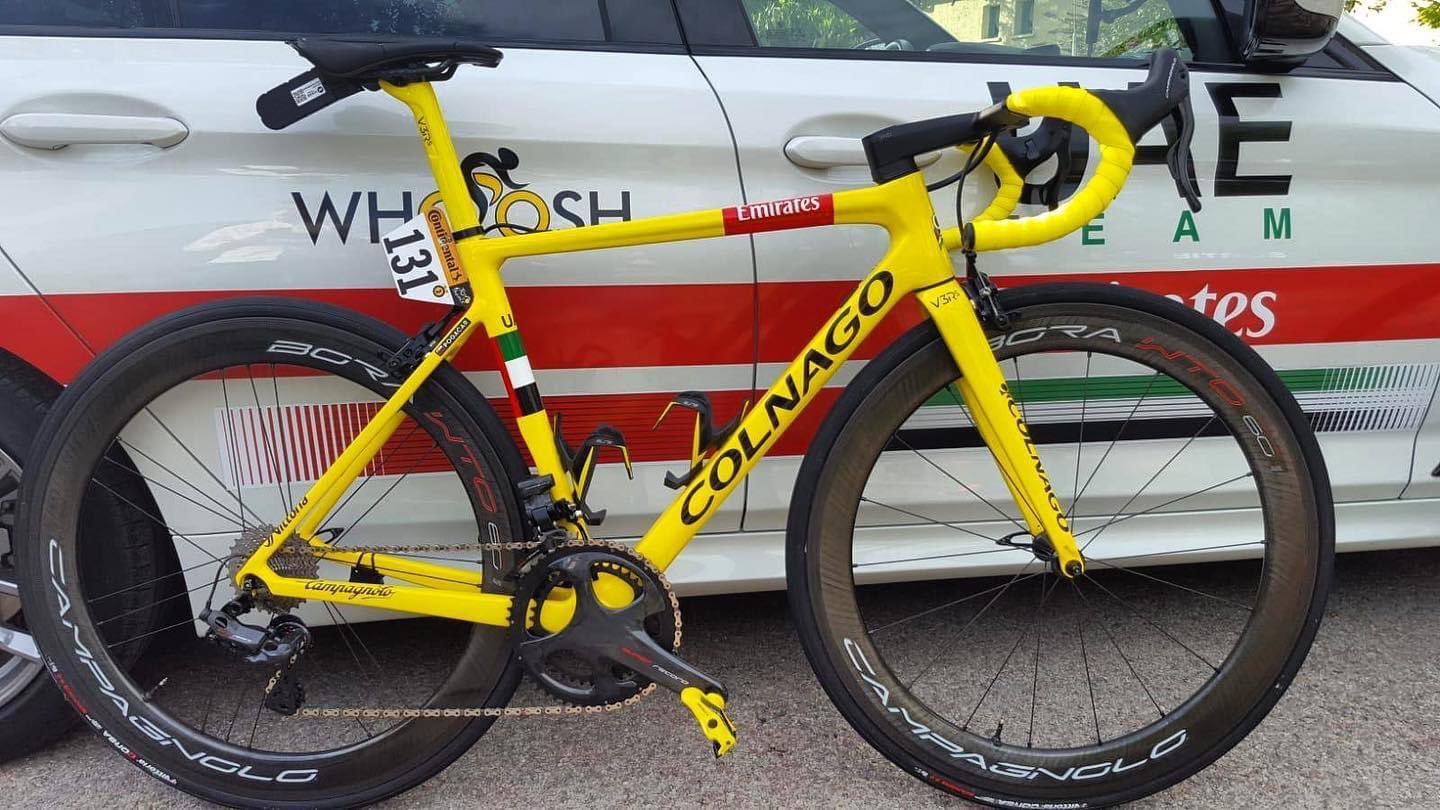
Over the 21 stages of the Tour de France, the scoreboard reads 11 stages to discs and 10 stages to rim brakes. When we look at the overall podium, first and second places were occupied by rim brakes while Richie Porte stood on the third step having raced the new Trek Emonda complete with rotors and flat-mount calipers.
Collectively we have spent hours debating the pros and cons, the marginal gains and strikes for and against brakes that squeeze onto a brake track or a rotor, or whether a tyre is glued to the rim, filled with sealant, or an inner tube, whether they use power meters or ride by feel, whether the bike is lightweight, aero, neither or both.
This tour demonstrates that under the power and skill of a pro rider, it doesn't matter all that much how they slow down.
Based on the Gold Coast of Australia, Colin has written tech content for cycling publication for a decade. With hundreds of buyer's guides, reviews and how-tos published in Bike Radar, Cyclingnews, Bike Perfect and Cycling Weekly, as well as in numerous publications dedicated to his other passion, skiing.
Colin was a key contributor to Cyclingnews between 2019 and 2021, during which time he helped build the site's tech coverage from the ground up. Nowadays he works full-time as the news and content editor of Flow MTB magazine.